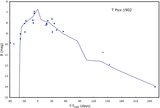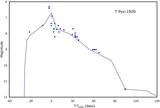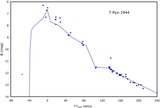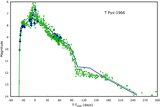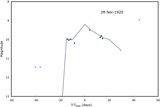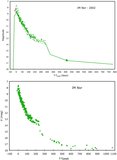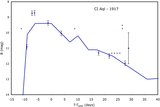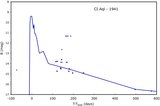Image Details

Caption: Figure 58.
T Pyx in quiescence. T Pyx has a well-observed light curve from 1892 to present (116 years). Each vertical line is for an eruption of T Pyx, with the eruption magnitudes not being displayed. We see a light curve with substantial scatter representing the usual flickering. But this flickering is superposed on highly significant long-term variations. From 1892 to present, T Pyx has been systematically fading from 13.8 to 15.7 mag. A variety of lessons can be learned from this graph: (a) Novae can and do have large-amplitude variability from decades-to-century time scales. Most novae do not have this quality of long-term light curve, so a reasonable supposition is that many novae also have comparable long-term variations. With the brightness being dominated by the accretion disk, this light curve is a demonstration of the long-term changes in the rate of material being lost from the companion star. (b) When T Pyx is bright we see short inter-eruption intervals, while when T Pyx is faint we see long inter-eruption intervals. This is easily understood by the requirement of nova theory that the trigger occurs when some constant amount of mass has been accumulated, and T Pyx is bright when the mass transfer rate is high. (c) We see why the long-anticipated eruption expected for ~1988 is long overdue, with the reason being that the accretion rate was greatly lowered soon after the 1967 eruption so that it will take a much longer time to accumulate the critical mass on the surface of the white dwarf. Schaefer (2005) has made a quantitative analysis to derive the next eruption date as 2052 ± 3 provided that the accretion continues at the same rate as in the last few decades. In the last few years, T Pyx is apparently slowly fading, with the implication that the next eruption will be long after the year 2052.
Copyright and Terms & Conditions
© 2010. The American Astronomical Society. All rights reserved.



